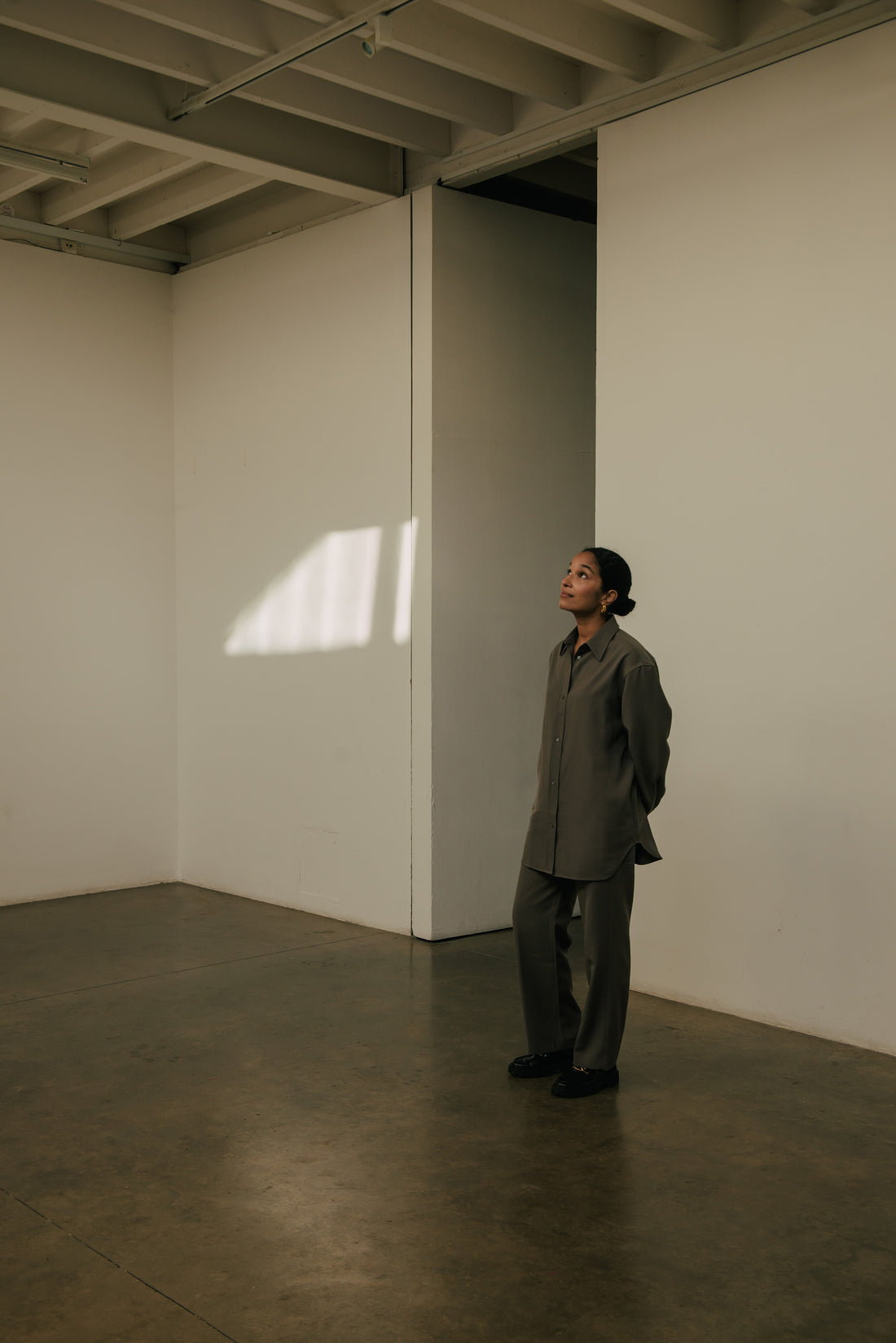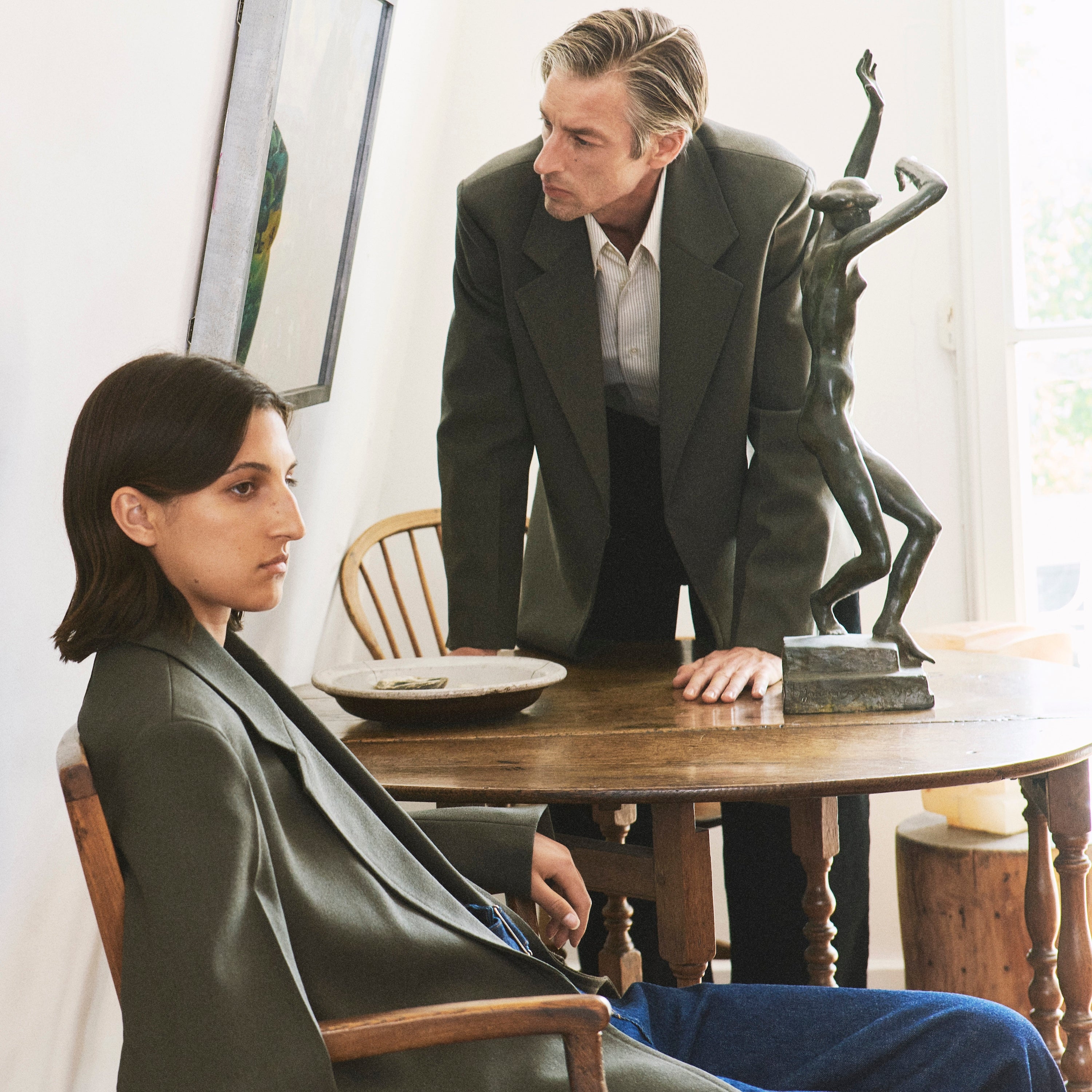Capital cities don’t get much better than London. With a population that pips 10 million, it’s a bona fide sprawling metropolis that straddles the river Thames, with an atmosphere that’s tricky to explain. Fast, slow, new and old. Urban, hectic, serene and green. Spicy, traditional, snazzy and lo-fi – London sandwiches opposites effortlessly and makes for an eternally interesting place to visit and exist.
CREATIVE CURATION - IN CONVERSATION WITH EVA LANGRET

When it comes to art, the world knows its name. London puts a stamp on most of the best stuff and acts as an incubator for the up-and-coming. The Frieze art fair started there in 2003 and has since become (arguably) the world’s most influential annual show of contemporary art. Eva Langret is the Director of Frieze London. With a solid background in forward-thinking, boundary-breaking curation, she’s also a fan of Studio Nicholson’s modular wardrobe (for work and play). We invited Eva to be a part of the In Conversation With series and asked her to nominate the location.
Refreshingly, she chose south of the river, which, for the non-London dwellers out there, has been labelled (historically) as the zone where taxi drivers often refuse to go – for reasons I’ve never understood. With wider streets and a more relaxed skyline than its north London counterpart, I’ve never understood the bias – it’s always felt pretty grand to me. Medieval politics aside, photographer Genevieve and I made our way down to Camberwell to meet Eva at the South London Gallery on Peckham Road. A typically autumnal afternoon, with damp pavements and drizzle, I was hopeful the clouds would clear in time for Eva’s portraits.


On arrival, we were guided through the original Victorian building to the surprise of a large purpose-built space out back. Completed in 2010, this thoroughly modern gallery expansion was designed by UK-based architects, 6A. On initial viewing, it was a dark, abstract ‘box’ sitting amongst a densely planted garden. But once inside, the place was flooded with light thanks to the top-lit glass roof and the entire west wall pivoted out towards the landscaped courtyard (thanks to gigantic monolithic doors). With clean lines, white walls and perfect angles, Genevieve had hit the big-time today.
Eva Langret grew up in the suburbs of Paris. After studying Economics at Université Paris Dauphine, she followed it up with an MA in Arts Management from L’Institut d’études supérieures des arts before moving to the UK to embark on an MA in Art History and Archaeology at SOAS, University of London. After introductions, we sit down with a coffee in the Clore Studio and I ask how long it took her to feel ‘settled’ here in London after telling her it had taken me a fair few years. For Eva, it was a rapid transition. She smiled and said, “It took me 5 weeks max – but I’d visited many times before and had studied for a year in London, so I was already familiar with the city before I moved here permanently. I've always been lucky where I landed, but I've seen some pretty dire flats in my early years. Having said this, the communities that make up London are so diverse, so international, so vibrant, that it always feels like it is possible to find kindred spirits and build your chosen family here.
I sort of landed in Brixton as soon as I moved to London and found my bearings pretty quickly - the people I worked with really created a community around me. I met lots of young creative folks through my first job, who were also trying to navigate various creative industries, make a living and find their way. I never felt lonely. There was a very eventful nightlife in Brixton at the time which I gleefully joined, there were feverish parties at Z bar and Fridge bar and live music at Mango Landin'. It was so much fun, Brixton was such a mad mix of people. There were artists' studios in the derelict toilets of the Brockwell Lido. It's now a luxury gym, which I guess says a lot about the trajectory of the neighbourhood over the past two decades!”
The clouds cleared a little and we seized the opportunity to start snapping. While Gen set up the shots, I asked why the South London gallery had been Eva’s choice for today and pondered its relevance to her, or her career. She said, “This gallery is one of the most beloved art spaces of South London. It opened in the 19th century and nowadays runs an inspiring programme, including exhibitions, tons of events, education programmes, family activities and artist residencies. There’s always something interesting happening, it feels welcoming and very much rooted in its local community, while having an international (and internationally recognized) programme. It also has a lovely café and a garden designed by artist Gabriel Orozco – which I have tried (and failed) to imitate in my own backyard. It looks simple at first, but as often with gardens it’s actually bloody complex and difficult…”
Her role as Frieze’s Artistic Director means a hellish travel schedule, constantly zipping from one place to the next. As someone who has wholeheartedly embraced the elasticated waistband since the spring of 2020, I wondered whether Eva’s wardrobe had altered since the lockdowns. With a nod, she explained, “ My style has become much simpler over the years. Partly because of age, partly because of Covid and partly because of motherhood – which all sort of happened to me at the same time. I don't want to faff around trying to make elaborate combinations work in the morning. I just want to put something on and look and feel good without it feeling like my ‘Sunday best’. It's funny because I now have more opportunities to dress up in my current job, but I rarely ever do! I'll wear a good suit, a co-ord or a simple dress with good jewellery. I don't have the time to get changed before going out to evening functions so whatever I put on in the morning has to work for dinner too.

I love fashion, but I stopped following trends years ago. I'm not interested in the anxiety that following the cycle of trends generates, the resources and time involved in keeping up with it. Vintage and second-hand tend to be where I find my key ‘wow’ pieces. In terms of what inspires me, the folks that I find most stylish often mix things up and borrow from various registers – say tailoring with streetwear or high fashion with pieces found in a charity shop, designer with vintage etc...I think it’s a good way to show creativity.
I love comfortable, well-made clothes that stand the test of time. I’m quite specific with what I buy. I look at craftsmanship, so things like how the garment is constructed, how it moves, and the type of materials it is made of. Then I'll see how the clothes make me feel (I don't do fidgety clothes) and if it works with items I already own. I like bold shapes – and good colours are also important. That's not necessarily to say colourful, but tones and shades can make or break an outfit.”
Loyal Studio Nicholson fans will probably already be aware of how the modular wardrobe has become an unofficial uniform for movers and shakers in the creative industries, and Eva is no stranger to its power. As elfin Gen darts around to grab shards of sunlight, I ask if Eva recalled her first ever piece and she confirmed, “It was a blazer that I bought years ago, and still wear today. It’s a brand favored by so many artists, curators and gallerists because it works. Whatever Studio Nicholson I buy works so well with the older pieces, which I love. I really admire people with an ultra-simple, almost ascetic signature style which stays the same over time. I admire the clarity of vision and the discipline: knowing what works for you and sticking with it.”
Eva wears our Santos Wool Shirt in Reed and the Eyasi Pant in Reed.




